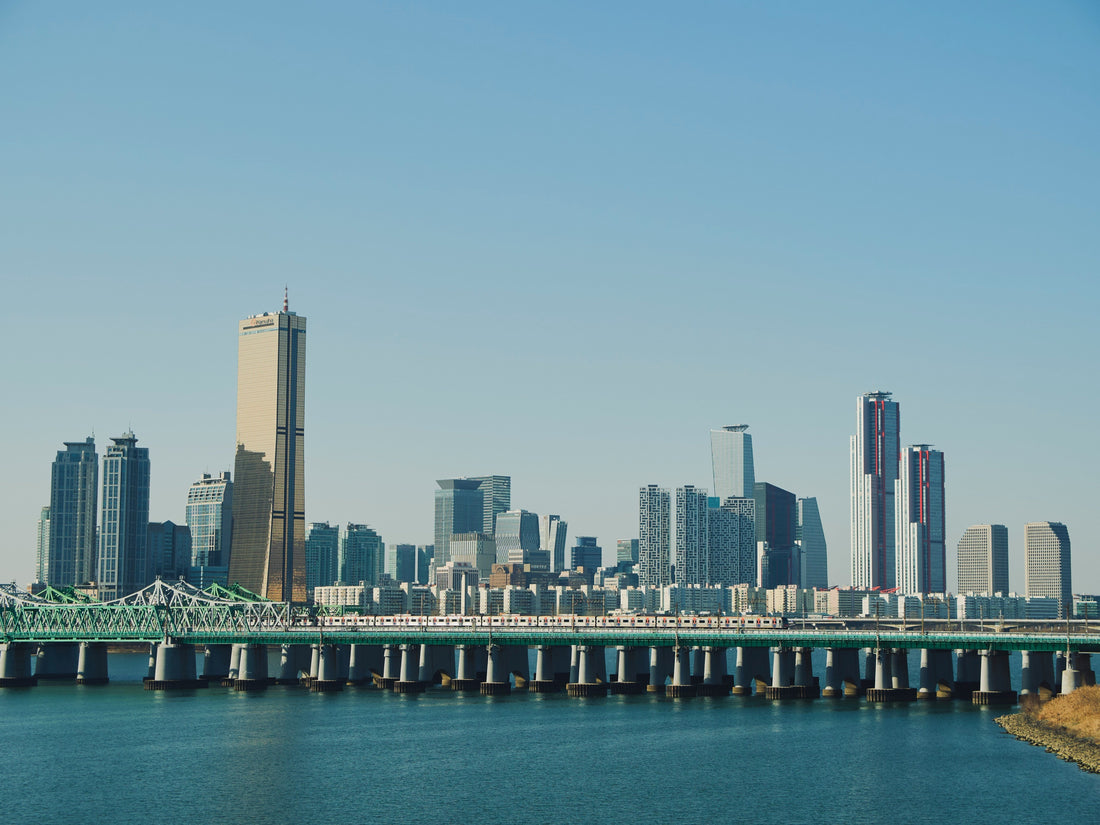
Getting Around South Korea: Everything You Need to Know
Daebak InternsWhen people think of South Korea, they often imagine glowing Seoul skyscrapers, bustling K-pop stages, or steaming bowls of bibimbap. But if you spend even a day in the country, you’ll quickly notice something else: getting around here is surprisingly easy. Whether you’re a first-time visitor or a long-term resident, South Korea’s transportation system is designed to keep you moving: fast, efficiently, and with very little stress.
Unlike in many countries where public transit feels like a chore, in Korea it’s a seamless part of daily life. From the vast subway networks to the high-speed KTX trains, and from the buses that cover every corner to the tap-and-go convenience of the T-Money card, transportation in Korea reflects the country’s bigger values: speed, order, and innovation.

Seoul’s Subway: A City Beneath the City
If you’ve never taken Seoul’s subway, prepare to be impressed. With over 23 lines and more than 700 kilometers of track, it’s one of the largest systems in the world. But it’s not just size that matters, it’s the experience. Trains are spotless, air-conditioned in summer, heated in winter, and they almost never run late.
For locals, the subway is part of everyday life: students studying on their way to class, office workers checking their phones, families traveling together. For visitors, it’s remarkably user-friendly. Every sign is in Korean, English, and often Chinese and Japanese, so you don’t need to know the language to find your way. Stations are equipped with elevators, convenience stores, and even underground shopping centers.
And then there’s the price: for about 1,250 –1,550 won (roughly $1), you can cross the city and find freeWi-Fi at almost every station. That mix of affordability and convenience makes it clear why the subway is the backbone of urban Korea.
The Comfort of Buses
Many travelers hesitate to use buses abroad, they’re often confusing, hard to navigate, and stressful. In Seoul and other Korean cities, buses are a different story. They’re color-coded by function:
-
Blue buses: long-distance, cross-city routes
-
Green buses: neighborhood connectors
-
Yellow buses: circular routes within districts
-
Red buses: express buses linking suburbs to the city
This system makes it easy to know which bus you need, even as a foreigner. More importantly, the buses are tightly integrated with the subway system. If you’re using a T-Money card, you can transfer between subway and bus for free or at a discounted rate, meaning you never feel penalized for switching modes of transport.

The Magic of the T-Money Card
Speaking of T-Money, no article about Korean transportation would be complete without mentioning it. T-Money is a rechargeable smart card, that you simply tap on a sensor when entering and exiting buses, subways, or even taxis.
The beauty of T-Money is that it works everywhere: from Seoul to Busan, and even in smaller cities. You can buy one at any convenience store, load it up with credit, and never worry about buying tickets again. Tourists often pick up a Korea Tour Card, a special version of T-Money that offers discounts at attractions and shops.
KTX: Shrinking the Country
South Korea may look small on a map, but it feels even smaller when you ride the KTX high-speed train. Launched in 2004, the Korea Train Express connects major cities at speeds up to 305 km/h (190 mph). That means you can travel from Seoul to Busan, about 325 km apart, in just 2.5 hours.
The KTX has fundamentally changed how Koreans think about distance. A business meeting in Daejeon in the morning and dinner in Seoul that same evening? No problem. Weekend trips to coastal cities like Busan or Mokpo are easy. Even locals sometimes choose the KTX over flying because it’s faster once you factor in airport travel and security lines.
For tourists, the KTX is also a way to see more of the country without stress. You can go from the fast-paced energy of Seoul to the laid-back beaches of Busan in the time it takes to watch a movie.
Taxis and Apps
While public transport covers most needs, taxis in Korea are another affordable and reliable option. Standard taxis are everywhere, and you’ll rarely wait long for one. Apps like Kakao T make booking even easier, and you can pay with T-Money, card, or cash. For those wanting something more premium, “Black Taxis” offer upgraded comfort at a higher price.
Compared to many Western cities, taxi fares in Korea are very reasonable, which makes them a practical choice if you’re traveling with luggage or late at night after the subway has closed.
The Gateway: Incheon International Airport
No discussion of transportation in Korea would be complete without Incheon International Airport. Consistently ranked among the best airports in the world, Incheon is not only modern and efficient but also a cultural introduction to Korea. The airport itself offers everything from Korean food courts to cultural performances.
Getting from Incheon to central Seoul is equally smooth. The AREX (Airport Express) train connects the airport to Seoul Station in under an hour, offering both all-stop and express services. Taxis, buses, and ride-hailing services are also available, making arrival and departure easy.
Final Thoughts: Transportation as a Reflection of Korea
South Korea’s transportation system isn’t just about moving people from point A to point B. It reflects something deeper about the country: a culture that values speed, efficiency, and convenience without sacrificing accessibility. For travelers, this means less time figuring out logistics and more time enjoying Korea’s food, culture, and sights.

If you’re planning a trip, rest assured, getting around will be the easiest part. And for those who live here, transportation is a daily reminder of how thoughtful planning and innovation can make life not just functional, but genuinely enjoyable.

